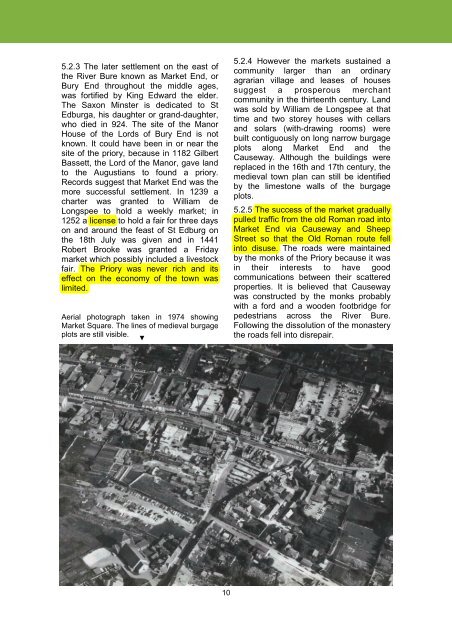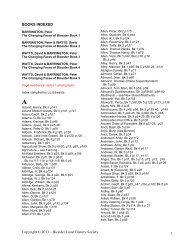Draft Bicester Conservation Area Appraisal November 2009
Draft Bicester Conservation Area Appraisal November 2009
Draft Bicester Conservation Area Appraisal November 2009
You also want an ePaper? Increase the reach of your titles
YUMPU automatically turns print PDFs into web optimized ePapers that Google loves.
5.2.3 The later settlement on the east ofthe River Bure known as Market End, orBury End throughout the middle ages,was fortified by King Edward the elder.The Saxon Minster is dedicated to StEdburga, his daughter or grand-daughter,who died in 924. The site of the ManorHouse of the Lords of Bury End is notknown. It could have been in or near thesite of the priory, because in 1182 GilbertBassett, the Lord of the Manor, gave landto the Augustians to found a priory.Records suggest that Market End was themore successful settlement. In 1239 acharter was granted to William deLongspee to hold a weekly market; in1252 a license to hold a fair for three dayson and around the feast of St Edburg onthe 18th July was given and in 1441Robert Brooke was granted a Fridaymarket which possibly included a livestockfair. The Priory was never rich and itseffect on the economy of the town waslimited.Aerial photograph taken in 1974 showingMarket Square. The lines of medieval burgageplots are still visible.5.2.4 However the markets sustained acommunity larger than an ordinaryagrarian village and leases of housessuggest a prosperous merchantcommunity in the thirteenth century. Landwas sold by William de Longspee at thattime and two storey houses with cellarsand solars (with-drawing rooms) werebuilt contiguously on long narrow burgageplots along Market End and theCauseway. Although the buildings werereplaced in the 16th and 17th century, themedieval town plan can still be identifiedby the limestone walls of the burgageplots.5.2.5 The success of the market graduallypulled traffic from the old Roman road intoMarket End via Causeway and SheepStreet so that the Old Roman route fellinto disuse. The roads were maintainedby the monks of the Priory because it wasin their interests to have goodcommunications between their scatteredproperties. It is believed that Causewaywas constructed by the monks probablywith a ford and a wooden footbridge forpedestrians across the River Bure.Following the dissolution of the monasterythe roads fell into disrepair.10



